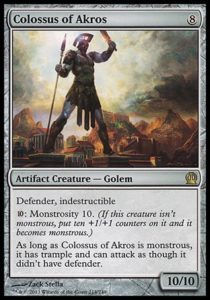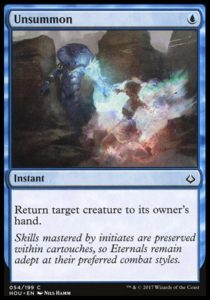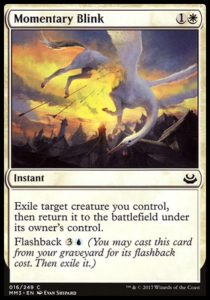Hello everyone, and welcome back to Let’s Brew! Much like Magic Origins, Core Set 2019 is once again taking up the narrative gauntlet as we learn the history of bad ol’ Bolas and his Elder Dragon brethren in a not-quite Dominaria follow-up.
Today, we’re going to build a deck around another value-driven, two-bird-killing stone that is sure to be a casual favorite for years to come— Bolas’s big bro, Arcades!
WHY ARCADES?
Let’s be real. Each of these Elder Dragons got injected with excellent, compelling, modern redesigns that fit today’s Magic game. Vaevictus is value; Bolas is a discarding, spark-igniting flip-walker; Palladia-Mors and Chromium are complex-yet-invigorating puzzles that will be solved across several formats. Yet in spite of all of these, Arcades has resonated the most amongst casual Commander players already.
It makes a lot of sense. Tribal Defender has been an underground hallmark of the community for a long time, and there’s certainly a demand for players who want to attack with Wall of Denial and draw a card for all their troubles.
What intrigues me about Arcades isn’t the ever-obvious value, or the casual appeal of attacking walls (though I’ve built the Doran deck, and it’s a blast!). It’s more of a “Who Watches The Watchmen?” situation for me. I like the challenge of being the strategist – and the protector of the Strategist himself, Arcades – and I’ve tasked myself with implementing a more intricate game plan in constructing my list.
THE PLAN
Obvious value and power make Arcades a massive target, so sticking the Elder Dragon and keeping him around for more than a turn will prove difficult. The immediate draw advantage is great, but at some point, we’re going to have to string together some successful combat steps.
In that way, we have to make some similar assumptions about how our opponent(s) may treat Arcades. He’s similar to Edric in many ways: both draw us cards, and do so with otherwise irrelevant Commander cards, making them core pieces to engines that help the deck run.
The difference is that Arcades is most likely to be cast in two different situations. The first is what I call the “Back Foot” mode, wherein we cast Arcades first to draw cards and catch up when we fall behind. The second is “Front Foot” mode, where we cast him with Walls in play and are able to turn them sideways.
Knowing and understanding these modes will not only help us decide what kinds of cards we’d like to have (i.e. protection spells, counters), but will also set you up for Arcades success immediately.
THE DECK
View this deck on TappedOut.
Buy this deck from Card Kingdom.
For the most part, every version of this deck is going to have a basic beginning plan: cast Arcades, proceed to cast Defenders, and begin attacking.
If it sounds easy, it is! Of course, that’s before any typical Commander shenanigans get in our way. Which they will. Guaranteed.
So, we’ll have to arm ourselves with knowledge. And tricks. But mostly knowledge. For example, if you can draw 3-4 cards with Arcades by the end of Turn 6, you’ve probably got your game plan set up pretty well. I recommend looking for opening hands with a decent spread of lands and one or two Defenders with a blink spell. That sounds really precise, but it’s not too difficult, given quality creature options (Wall of Omens or Wall of Blossoms), as well as the abundance of blink spells we have access to in Blue and White. Even if you don’t have this kind of hand, casting Arcades often lends itself to smoothing out otherwise sketchy keeps, as I was easily able to draw a counterspell or trick to accrue more value before an opponent removed part of my engine.
Which brings me to something I mentioned before: always assume your opponent(s) will find a way to interact with Arcades. There are two key places where good players will look to respond. The first is when you have a Defender creature on the stack. Removing Arcades at this point is a solid plan, ensuring that you don’t draw an extra card and preventing you from a potential attack if you have a Wall or two in play. With Walls that mostly cost two or three mana to cast, we’re often going to have a single mana available in any given turn, and I’d like to take advantage of any situation where our opponent(s) may think we’re tapped out. We can interact pretty well on the stack with a handful of bounce spells like Curfew and Unsummon; worst-case scenario, we have to bounce Arcades, but we are prepared with plenty of land, Overgrown Battlement, and Axebane Guardian, so we can cast Arcades four or five times from the Command Zone, should it come to that.
The second point of interaction is when we go to combat. Arcades is very similar to the Theros Pantheon in that it is easy to disrupt their offense by simply removing a critical piece of devotion, or in our case, Arcades himself. The value of holding up a couple mana cannot be understated here. Saving even one mana for timely blink spells like Essence Flux or Momentary Blink are great ways to either dig for counterspells (which are also one mana for this reason) or grab more Walls if a Wrath is imminent. This way, even if your plan is disrupted, we can already begin rebuilding.
My favorite tech in the deck has to be the Flash enablers (Scout’s Warning, Winding Canyons, and Alchemist’s Refuge); I got the idea from our Flash Defenders Jeskai Barricade, Foriysian Interceptor and Plumeveil. Not only to do they enable an EOT Arcades, but they also help make surprise plays with some of our favorite three-drops: Psychic Membrane, Guard Gomazoa, and resident crowd-favorite, Wall of Denial.
DECK EXPECTATIONS
Overall, I expect Arcades lists to be everywhere. Everywhere, and good. This deck is very affordable, very fun, and very easy to put together and play. I think everyone is susceptible to the silliness of wanting Walls to attack, breaking Magic rules, and having a good time, and this is what it’s all about.
Are you building Arcades? What’s your favorite Wall? Be sure to tell us on Twitter @Card_Kingdom!

For most of his Magic-playing life, Aaron has been playing and writing about Commander. One of the few mono-colored players in a gold-bordered world, Aaron enjoys the challenges of creating meaningful, memorable games, as well as the excitement that comes with engaging underrated cards as he explores the format’s uncharted territory. A disciplined deckbuilder with over 200 lists to his name, Aaron has spent the past several years creating content about his favorite format.








